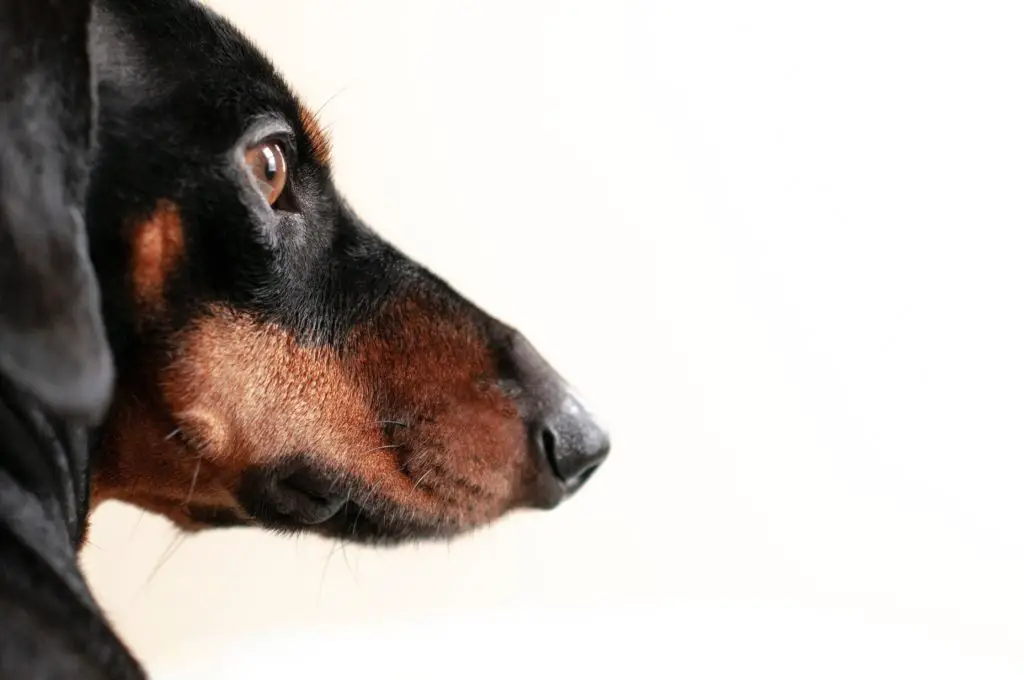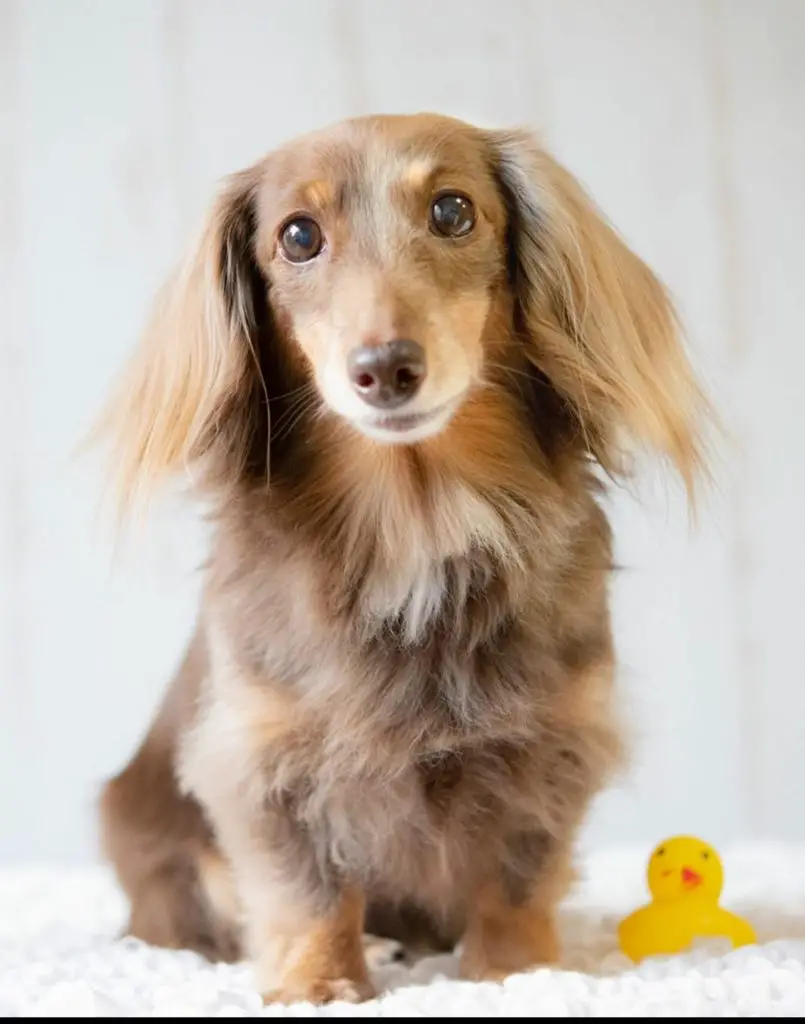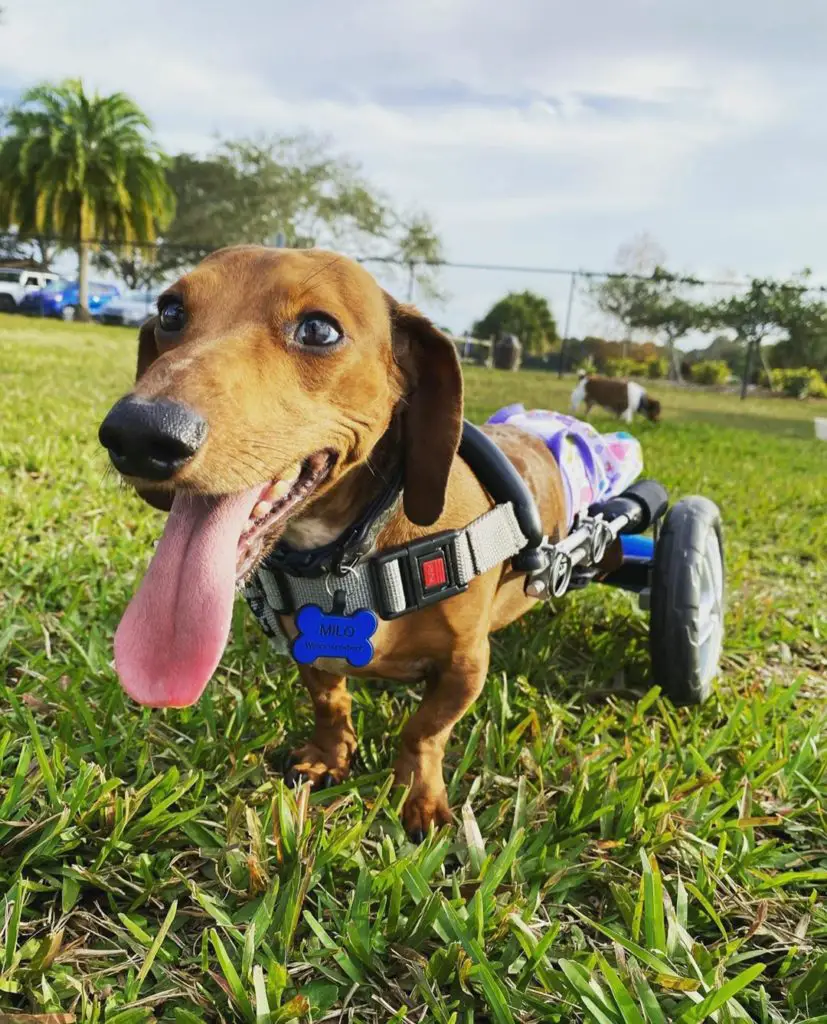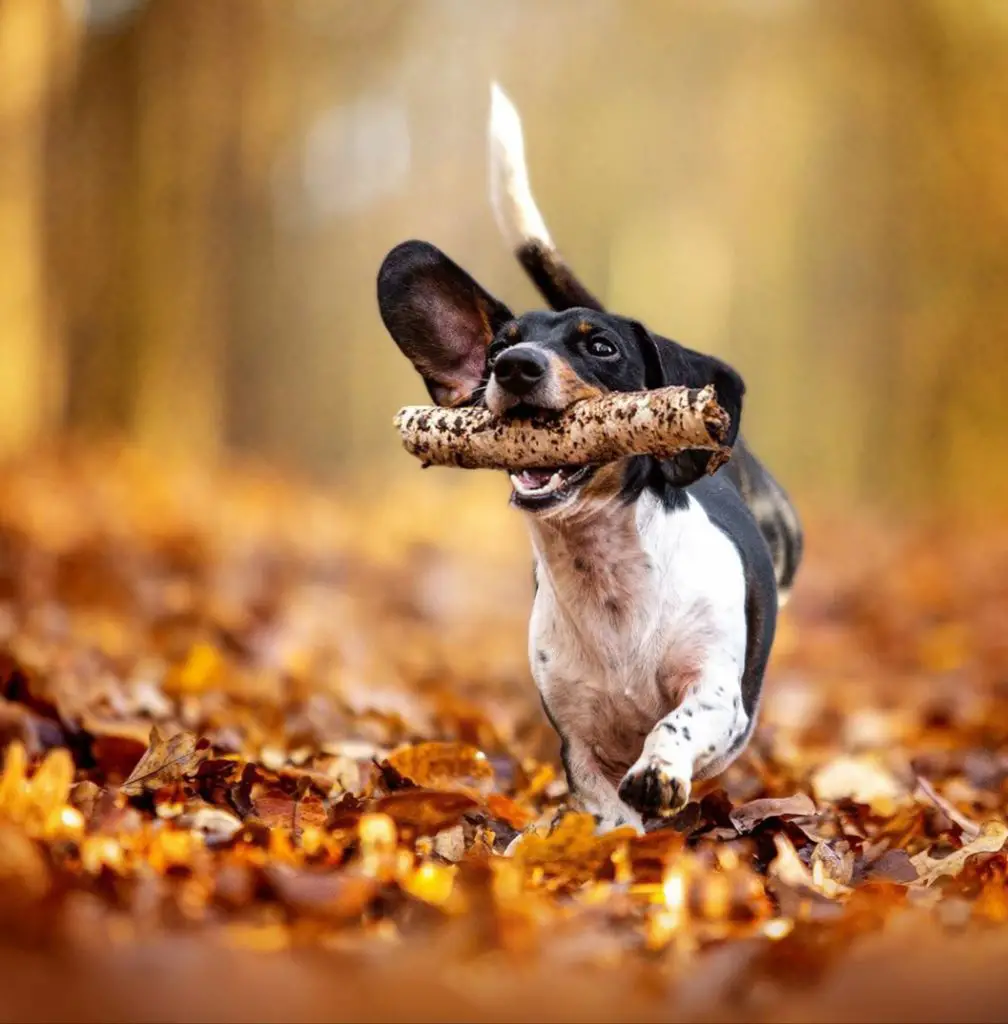Did you see a Dachshund and say, I want one? Well, in this article I have done my research, spoken to owners and experts of Dachshunds and I want to share with you some important things and tips you need to know as a first-time owner or would-be owner of a Dachshund.
Here are 10 things you need to know about Dachshunds before you get a dachshund:
1. Dachshunds Are Hound dogs
According to the American Kennel Club, Dachshunds were originally bred in Germany as badger hunting dogs, thus their name; dachs = Badger and hund = dog. They have a very strong sense of smell, prey drive and were also used in the past for tracking.
Because of their strong sense of smell and high prey drive, they could easily stray if they pick up on a strong scent of a smaller animal like a squirrel while on a walk or outdoors.
This makes it essential to train them to back off a lead when they are still young puppies to avoid them going too far away from you while outdoors.
As an owner, you could take advantage of their tracking abilities by hiding treats all around the house. This will, in turn, exercise their body as well as train their minds to be independent, tapping into their natural instincts of being a tracker.

2. Dachshunds Come In Two sizes And Three Coat Variants
According to the American Kennel Club, Dachshunds come in a standard-size (weighing between 16 to 32 pounds) and miniature-size (weighing nothing more than 11 pounds).
The standard-sized were bred to go after badgers and foxes while the miniature-sized dachshunds were bred to go after rabbits.
They also come with three coat variants; Smooth, Long and Wired haired.
The smooth-haired dachshunds are believed to have been bred down from basset hounds and the wired-haired were from a mix of a terrier to get the wired coat, hence their tendency to be quite resilient and extra difficult to train.
Finally, the long-haired dachshunds were bred with spaniels to get their long coat, making them fair better in a colder climate.
These various coats come with their own grooming needs. According to the AKC, “Smooth-coated Dachshunds are somewhat “wash and wear,” needing little beyond a wipe with a towel or hound glove to look dapper. Longhaired Dachshunds may require more frequent brushing, depending on the thickness of the coat. The Wirehaired coat can be plucked or hand-stripped several times a year to look its best, but beyond that is easy to maintain between groomings with occasional trimming of the beard and eyebrows and brushing or combing once or twice a week.”

Photo credit @maronmaromaropyon on IG

Photo credit @ziggythedach on IG
3. Dachshunds Are Prone To Back Injuries
Due to their elongated backs, dachshunds are prone to what is known as Intervertebral Disc Disease (IVDD).
Now, I know that sounds scary, but not all dachshunds would suffer from this hereditary disease. Those that do, however, would develop spinal injuries in their back or neck.
This could result in the dachshund being confined to a wheelchair.
According to L’il Back Bracer: “IVDD is a degenerative disease that causes the spinal disks to age faster than normal. The disks become dry, brittle, and fragile.
IVDD starts when the jelly-like inner layer starts hardening, so it can’t cushion like it’s supposed to.
When that inner layer bulges out or herniates, it causes pressure on the dog’s spinal cord. It can bulge out a little or a lot, causing mild to severe problems.”
Regardless of the fate of your dachshund, it’s important that you learn to never just pick up a dachshund like you would pick up other dogs.
To pick up a dachshund, support should be placed on their chest and bum to take the pressure off their spine. Also, never leave their feet dangling when you finally pick them up.
How to pick up a dachshund
The dachshund should not be allowed to jump off high platforms like beds, sofas. They should not run up or downstairs. Ramps can be installed to help your dachshund easily get on and off your bed.

4. Dachshunds Are Energetic And Require Regular Exercise
Dachshunds are energetic and require a fair amount of exercises to keep them fit and calm. They, like most energetic breeds, tend to be destructive in the house if they get bored or don’t get exercised properly.
If you have a yard, your dachshund should be left to run around freely to burn off their energy. This should be done under strict supervision if your yard isn’t fenced in because of their tendency to run after little animals and stray.
If you live in an apartment without the luxury of a yard, a game of tug with a tug rope for small dogs or playing catch with their favourite toy or ball could be a great way to get them all worked up and exercised.
If you are an active and outgoing individual, the dachshund breed can be a great companion as they can be taken on a hike or walk to help keep them exercised and keep their muscle toned. Long-distance running and swimming are not advised for a dachshund to engage in.
An adult dachshund (above 1 year) would probably need an hour of free running exercise every day to get them properly exercised.

5. Dachshunds Are Extremely Loyal
Dachshunds are known to get really attached to their owners and they likewise become very overprotective.
They love to snuggle, whether on the couch or on the bed. They will dig under your blanket, get comfortable on your lap or beside you. They will follow you everywhere.
Their need to always be with you means they are not a breed you leave alone for a long period of time.
To prevent violent behaviour from their overprotective nature, the dachshund should be socialized from a very young age; with family, kids and other dogs.
6. Dachshunds Are Prone To Obesity
Dachshunds are known to get fat when proper attention isn’t paid to their health.
When they get obese, they suffer a great risk of amplifying the Intervertebral Disc Disease (IVDD) and it also exposes them to other medical conditions like diabetes amongst others.
To prevent this from happening, your dachshund should always get its exercise and be fed the proper portion of food according to their age.
A dachshund would always beg for more food or treats, don’t let those cute eyes make you weak, feed them the right portion and that should be all.
When training them to learn new tricks or potty training, the usage of treats as a reward option should be well inspected. As an owner, the number of treats given should be factored into your dachshund’s daily food portions.
Learn more about dog obesity and its health implications here.
7. Dachshunds Need Companionship
Dachshunds are not amongst the small dog breeds that can be left alone for a long period of time because they tend to get bored and develop separation anxiety, which makes them destructive, bark a lot and most often, pee and poop inside the house.
If you work an 8 hours shift, it would be advisable for you to visit your dog during breaks to play with them and possibly feed them.
If that isn’t an option, then you would have to enlist the aid of your neighbour, family members or a dog walker/sitter that would keep your dog company.
8. Dachshunds Love To Dig
Originally bred to go after badgers, foxes and rabbits that live in burrows, it shouldn’t come as a surprise that dachshunds love to dig.
With that in mind, they should be kept away from gardens and front lawns. They are also notorious for digging under a fence to escape as they are quite crafty and determined to finish what they have started.
It’s important to note that not all dachshund would dig but don’t be surprised if they start digging, it is what they were designed for.
If you have a dachshund that digs, a snuffle feeding mat could be helpful to help satisfy their digging urges while also being mentally stimulated.
9. Dachshunds Are Independent Minded and Strong-Willed
Dachshunds are smart, determined and independent-minded. They are great at lone problem solving and are determined to get to the root of an issue.
This could lead to them figuring out a way to escape their enclosure or figure out where you hid their treats if not properly stored and secured.
Their strong will makes them hard to train. They are trainable but owners and trainers need to exercise patience and consistency, especially when trying to potty train them.
“The key is to find what motivates them – a favorite toy or food usually – and use that as a reward during training sessions.“
Jessica Rae
10. Dachshunds Have A Loud, Big-Dog, Bark
Dachshunds bark, often and very loud.
Their bark can be mistaken to belong to that of a bigger dog. Paired with their alert nature, this makes them great watchdogs.
They are hyperalert and would bark at passing cars. it is up to you to train your dachshund to bark less frequently from an early age to reduce the nuisance of it barking at the doorbell, pizza man or the mailman.
This nature of barking incessantly if not properly corrected could be a deal-breaker for apartment dwellers with numerous neighbours and would almost suggest the dachshund isn’t fit to be an apartment dog but that’s not necessarily the case.
Bonus key things to note:
- Dachshunds don’t appreciate extreme weather. Weather hot or cold.
- Dachshunds live a long time, so get ready for the long haul.
- To have a well-balanced dachshund, you have to socialize them at a young age.
- They are strongly motivated by food.
- Dachshunds are not the breed for everyone.
- You need to invest in good pet insurance for your dachshund because most medical emergencies can be quite expensive.
Finally, as adorable as dachshunds are, I would love to conclude that from my research, dachshunds are unique in their own special way and new owners or potential owners need to understand their unique nature to carter for them.
Please don’t get a dachshund if you know you are not well equipped to handle them, we love to see dogs in homes and not in shelters. 🙂

